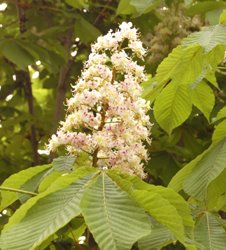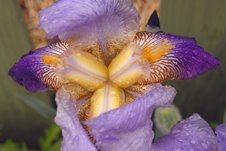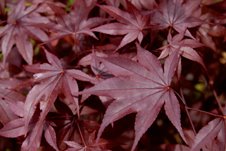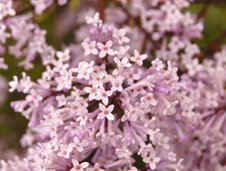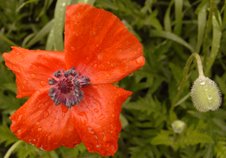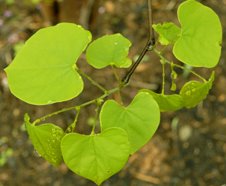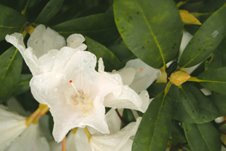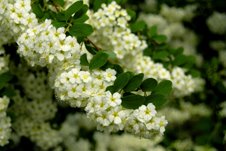CHEMICAL WARRIORS
As a landscaper, I understand that people want their lawn to look good. A lush, deep green, uniform and weed free lawn is the standard; or as I like to call it, the Dominant Grass Paradigm. So how do you get a lawn that looks like the ones at an exclusive golf course? Unfortunately, it’s usually achieved by the landscaper’s (or home owner’s) application of toxic chemicals.
WHAT’S A LAWN FOR ANYWAY?
Think of your yard as a room in your house. What do you use it for? You wouldn’t put a bed in the middle of the kitchen because it’s impractical. But often, a lawn is impractical too, because it requires such high maintenance. I’ve been telling my clients and friends for years, you should only have a big lawn if you have little kids, play a lot of badminton or you have a dog. As a play area, a lawn makes sense. But if the only time you step on your grass is when you’re pushing a mower, consider reducing the size of your lawn or replacing it with a more practical, beautiful (and chemical-free) landscape.
A CHEMICAL-FREE LAWN
“But I want a lawn!” you say. And you can have it. Just do it sensibly. First, let go of the notion that your grass has to be “perfect.” Make the commitment to not dump toxic products on your property. If you don’t have deep topsoil rich in organic matter to grow grass, get it. Keep your grass mowed high; this helps retain moisture and discourage weed seed germination. Water infrequently and deeply to encourage deeper root growth.
EMBRACE DIVERSITY
Diversity is regularly discussed as desirable in a social context, but less so in a biological context. What’s wrong with having clover, wild strawberry and violet mixed up in the lawn? Why is the dandelion practically considered a biological terrorist? Why is it that we are taught to kill what wants to grow on its own and force to grow what normally wouldn’t? Why is tall, un-uniform grass so offensive? Are we trying to make our lives more difficult?
We need to change the Dominant Grass Paradigm. The lawn pictured on the bag of weed killer should not be the standard. Has a landscaper ever told you that?
ONE PERSON’S WEED IS ANOTHER’S SALAD
People talk about weeds and noxious plants with authority and objectivity, but “weed” is a value judgment. People tell me all the time to “get rid of the weeds, but leave the plants,” as if the weeds weren’t also plants. My old Random House College Dictionary tells me this:
weed – 1. a valueless, troublesome, or noxious plant growing wild, esp. one that grows profusely or on cultivated ground to the exclusion or injury of the desired crop.
No plant is valueless. Let’s take the much-maligned dandelion for example. The new, tender leaves are excellent in salad, high in vitamins A and C. The flowers are beautiful, and can be used to make everything from fritters to wine. Yet I saw a big sign at a garden shop commanding customers to “KILL DANDELIONS NOW!” We’re being brainwashed.
Almost any plant can be considered a weed. I look at it this way; there are no bad plants, only bad places for certain plants. Take wild violets for example. I love violets, and I nurture a patch in my garden at home. But when a violet grows in between my strawberries, that violet is a weed, and I yank it, because in that place I value making big berries more than a ground cover with little purple flowers.
The word “noxious” is often attached to the word “weed.” In the spirit of precise language (and landscaping), I turned to my dictionary once again:
noxious – 1. harmful or injurious to health or physical well being.
Harmful or injurious to health or physical well being? That sounds more like the chemicals people are dumping on their lawns than the plants they’re trying to eradicate.
NORMAL IS OVER-RATED
People often plant grass because it’s normal. It’s just what ya do. Plus, it doesn’t require a lot of imagination or artistic skill. But we can do better. In place of turf, why not have deep beds full of trees, shrubs, flowers and edibles? You can have a yard that not only looks better, but one that also provides shade, habitat and food for critters (and yourself).
POISONING YOURSELF
I grew up in a suburb of Cleveland, where the Dominant Grass Paradigm has a firm grip on the populace. There used to be a so-called lawn-care company called Barefoot Grass. On the sides of their trucks’ chemical tanks was a big picture of happy barefoot children playing with a lovely dog on perfect turf. A worker in rubber boots would spray god-knows-what on my neighbor’s grass, and leave a little cardboard warning sign in the grass; the international “no” symbol over top of a crude picture of a kid and a dog. Even as a child who hadn’t incorporated the word “irony” into my vocabulary yet, this didn’t seem right. Because it isn’t. Google the name of any chemical herbicide, pesticide, or fungicide coupled with the word “toxicity.” You’ll quickly find out that any positive benefits of these chemicals are hugely outweighed by the negative consequences: water contamination, exposure to carcinogens and endocrine disruptors, for starters.
HOW ‘BOUT A NICE WHIFF OF DDT?
Unless it’s forced to admit otherwise through extensive investigative and/or legal means, a chemical company will always tell you that its products are safe. Don’t be naïve. Herbicides and pesticides are a multi-billion dollar a year industry. Chemical companies have a huge financial incentive to promote the Dominant Grass Paradigm so they can sell you all their toxic products. We can’t look to the chemical companies for the truth about their products. We can’t count on weak environmental laws to protect us. We can’t count on government agencies like the EPA to ensure safety of these products. Chemical companies do register their products with the EPA, but here’s a good point made on the website beyondpesticides.org:
*
EPA does not evaluate the health and environmental effects of actual pesticide formulations sold on the shelf. Data submitted to the EPA also does not account for low-dose effects, synergistic effects with inerts or combined exposure to more than one pesticide at a time.What we can all do right now is use (un)common sense and not poison ourselves by dumping toxic products in our yards.
Additional reading:
http://www.richsoil.com/lawn-care.jsp
http://www.beyondpesticides.org/lawn





